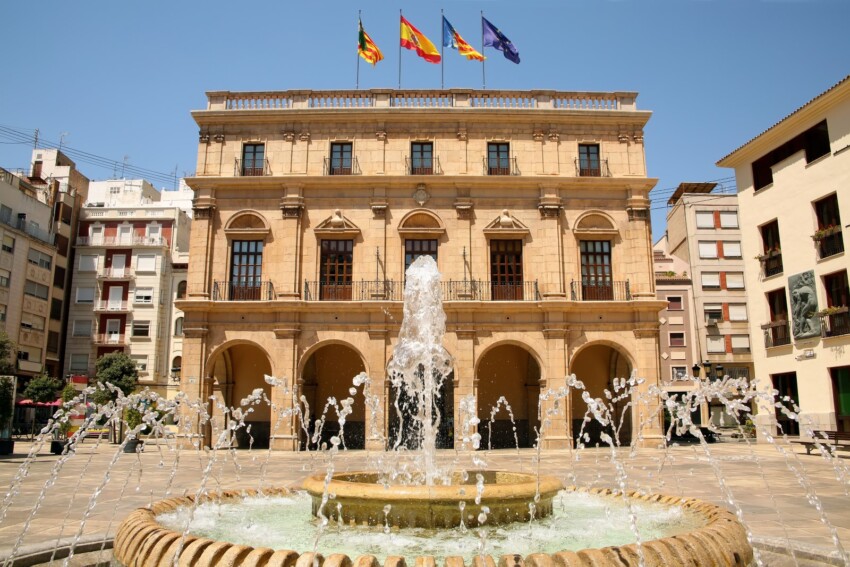

Castellón de la Plana is a charming town in the Autonomous Community of Valencia that is the capital of the La Plana comarca. Although not large, Castellón de la Plana attracts many visitors due to its special location and rich heritage.
Those in search of relaxation can find it at one of the beautiful beaches bathed by crystal-clear water, while those who enjoy hiking can take one of the many paths that characterise the relief of the area. Bathed by the Mediterranean Sea on one side and surrounded by massive mountains on the other, Castellón de la Plana is a destination that also holds an interesting historical heritage.
Those looking for a cultural trip will find Castellón de la Plana interesting thanks to its long history and numerous sites of interest. Adding to this is the city’s strategic location, which boasts a year-round mild temperature that makes bathing and other outdoor activities possible for almost six months of the year.
The city centre is home to noble palaces, ancient churches and majestic residences. The city’s economy was once based mainly on agriculture but with the development of services and accommodation facilities Castellón de la Plana has also become an important tourist destination.
Castellón de la Plana has managed to combine the charm of a town with a long history with the charm of a modern city. Its historical centre has retained the structure of the medieval town and from there you can take a beautiful walk of about 4 km to the sea. In addition to tourist activity, the industry related to the production of tiles and ceramic objects has also developed in recent years.
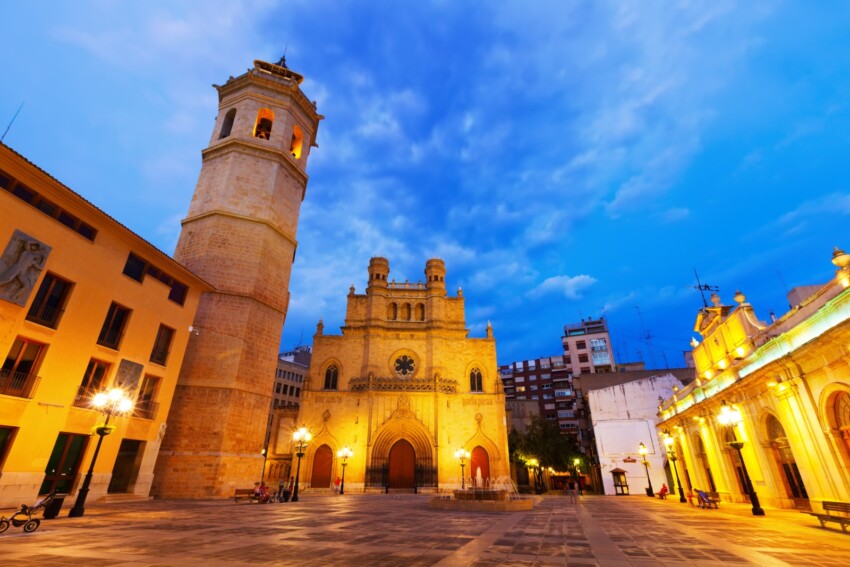
The Church of Santa María de la Asunción was originally built in the 13th century, but has since been devastated and rebuilt several times. The Gothic-style religious building that we can now admire is largely the result of post-war reconstruction. Only part of the façade and some interior ornamental elements belong to the original church.
Inside, the church has a Latin cross plan with three naves covered by a cross vault and houses a painting by Ribalta, a sculpture by Vergara and other valuable goldsmiths’ items. The bell tower, known as El Fadrí, is separate from the body of the church, has an octagonal plan and was built in the 16th century.
The Museum of Fine Arts of Castellón is located within a cloister belonging to the former college of Serra Espadá. It houses exhibits ranging from the Palaeolithic to the Middle Ages and tells the history of these territories. However, the main section of the museum is devoted to ceramic artefacts, where more than a thousand pieces are kept, mostly from the Onda, Ribesalbes and Alcora factories. The painting and sculpture sections contain creations by local artists such as Ribera, Romero de Torres, Rodrigo de Osona, Adsuara, Gandarias, Benlliure and Vicent.
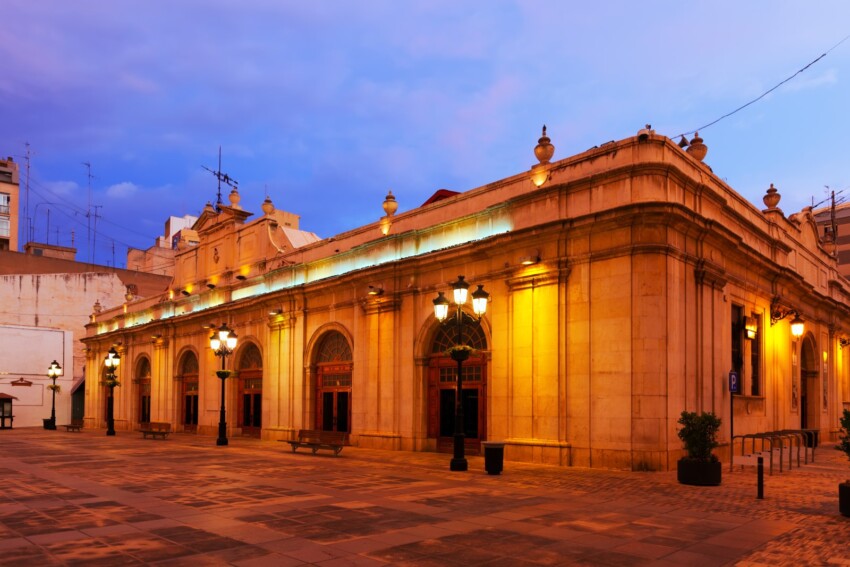
A visit to the Central Market is recommended in order to admire glimpses of the daily life of the local population and to purchase delicious typical products. Inaugurated in 1949, the Central Market is a place full of stalls selling fresh food and other characteristic goods. Since 1964 the Fish Market has also been located next to the Central Market.
The Basilica de Santa Maria del Lledó was erected towards the end of the 14th century but underwent major alterations in the following centuries. In particular, between 1724 and 1768, the building underwent substantial renovations that gave it its current configuration. The Basilica now presents itself as a three-aisled church with a dome and lantern. Under the chancel is a museum that houses several ancient artefacts, a 16th-century alabaster image of the Virgin Mary and a unique collection of cloaks.
The hermitages of Castellón de la Plana are part of the city’s historical and architectural heritage. These buildings were built along the route known as El Caminàs, an ancient route that seems to have been built by the Romans as an important communication route. Later, however, the road was also used by the Arabs and later by Christians.
And it was during the Christian era that many small hermitages were built along the road, surrounded by fruit trees, which can still be visited today. There are a total of nine hermitages in the municipality of Castellón, most of them located in rural areas while only one is in the city.
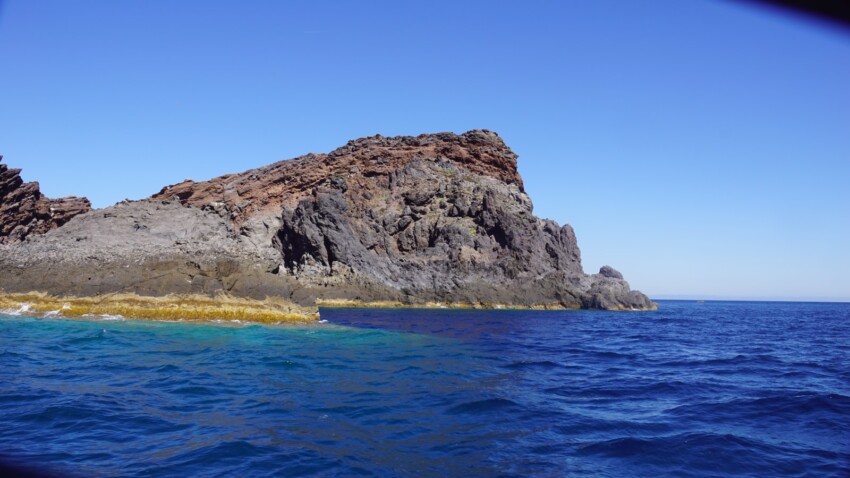
The Columbretes Islands are a group of islands of volcanic origin that form part of the territory of Castellón de la Plana. Due to its enormous landscape value, the archipelago has been declared a Natural Reserve of great value. Only ‘l’Illa Grossa’, i.e. the Big Island, can be visited by means of tours organised by authorised agencies and accompanied by an expert guide.
Numerous endemic species of flora and fauna can be found here, as well as numerous colonies of nesting seabirds. Interest in the area increases even more when exploring its seabed, which is home to numerous benthic species (such as the red gorgonian) and peculiarities such as red coral and Laminaria algae.
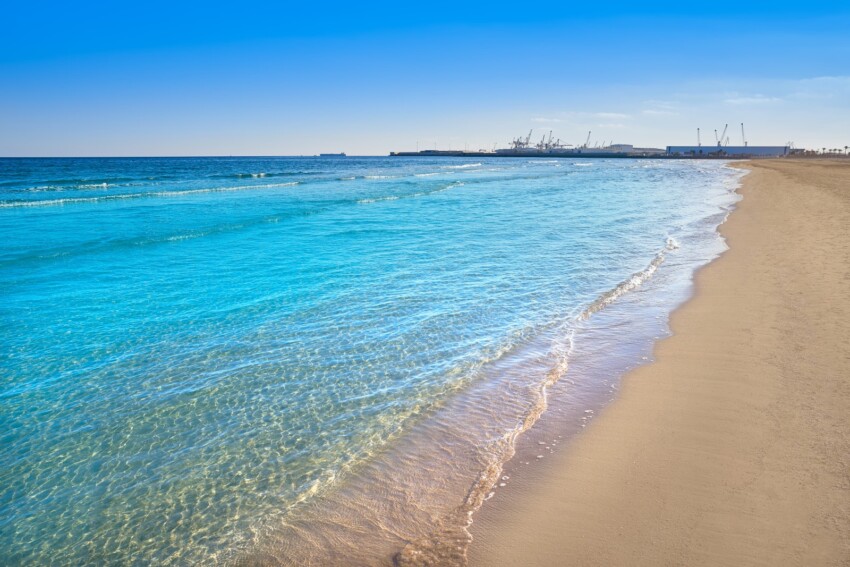
The city of Castellón de la Plana boasts a long coastline with three beautiful beaches where you can relax and swim: the Pinar beach, the Gurugú beach and the Serradal beach. In particular, the Pinar and Gurugú beaches have been awarded Blue Flag status for the quality of their water.
The Pinar Beach is equipped with all services, sports areas, children’s playgrounds and bars where you can eat. This beach gets its name from the pine forest that surrounds it, which is known as Parque del Pinar. The park has a recreational area open to the public and a municipal golf course with nine holes.
The Serradal Beach, on the other hand, boasts a dune protection area where the fractino has been nesting in recent years. The Dune Regeneration Programme was initiated in 1990 and has led to the existence of small, semi-mobile dunes that create a truly breathtaking landscape.
Castellón de la Plana is not a very large town but still boasts a fair number of accommodation facilities. For a more cultural stay, we recommend accommodation in the historic centre area where you’ll find hotels, inns and B&Bs. If, on the other hand, you are planning a relaxing trip, you can opt for one of the seafront establishments where large hotels, resorts or flats can be found.
We offer a selection of hotels at Castellón de la Plana to suit all categories of travellers. The most booked by tourists are the sea-facing hotels, often right on the beach. If you want to play it safe, choose one of the following: they are among the most booked hotels in Castellón de la Plana, sorted by number of reviews.
If you prefer space, privacy and the ability to prepare your own meals to a hotel holiday, book a holiday home at Castellón de la Plana. We recommend a few below, but in this case we advise you to book early because houses and apartments for rent at Castellón de la Plana are in high demand.
Castellón de la Plana is easily accessible both by car and by public transport. Those travelling by car from Barcelona can take the AP-7/E15 in the direction of Valencia to exit 46, while those travelling from Valencia can also take the E-15/AP-7 but in the direction of Barcelona to exit 46. Castellón de la Plana also has a train station that provides connections with cities such as Valencia, Alicante, Tarragona, Murcia and Cartagena.
What's the weather at Castellón de la Plana? Below are the temperatures and the weather forecast at Castellón de la Plana for the next few days.